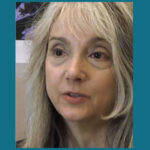 Dear Members and Friends:
Dear Members and Friends:
I am looking forward to serving as president of AAWE. AAWE has a broad mandate to encourage activities that explore wind effects on the built environment, including the influence of climate change as well as the harnessing of wind energy. I would like to thank Steve Campasano for his continuing efforts to keep AAWE alive and well.
What lies in the future for wind engineers? This is a challenging question, and I would like to hear what AAWE members think. I am fortunate to have known Alan Davenport and Jack Cermak, who created the discipline we now call “wind engineering”. They established the design standards for and use of boundary layer wind tunnels, which many of us take for granted. Through their pioneering efforts, wind engineering is a recognized field, but it has not reached the level of maturity whereby the important questions have been completely answered. Indeed, future climate changes may influence the manner in which we think about wind engineering.
Many years ago, I was honored to have co-written an article with Prof. Nick Jones and Dr. Cermak in the ASCE Journal of Professional Issues in Engineering Education and Practice, that called for a national wind hazards program in the US. We advocated strengthening the wind engineering field through an expansion of the four major tools of full-scale measurements, boundary layer wind tunnel testing, computational modeling, and analytic methods. In the past several years, many of our recommendations have come to fruition. Experimental facilities in the US and Canada have expanded tremendously in our quest to understand environmental aerodynamics of tornadoes, hurricanes, and winter storms. The effects of wind loadings on structures, including buildings and civil infrastructure, have been investigated through wind tunnel and full-scale measurements. More recently, numerical investigations have been expanded and presented to a broader audience of civil engineers through the Natural Hazards Engineering Research Infrastructure (NHERI)-based Simcenter. Post-storm investigations have been continuously updated to provide a template for investigations and corresponding data. The ASCE7-16 Commentary for Chapter 26 now includes a section devoted to the estimation of tornado wind speeds and pressures for EF0-EF2 ratings. This is all good news: The research infrastructure has greatly expanded, the transfer of results to practice has been stream-lined, and the code-writing bodies have been busy. Unfortunately, AAWE has not kept pace. It is no longer the preferred home base for wind engineers. I would like for AAWE to regain its role as a supportive home for everyone interested in wind engineering, including but not limited to these investigators, designers, consultants, and code writing bodies.
This is an unusual time to be assuming leadership. We are all affected by COVID-19. Societal changes have not stopped extreme weather events. Damaging tornadoes have occurred in the US according to www.spc.gov, and hurricane season will begin soon. Tropical storm Arthur has already made his appearance in the Atlantic. The NHERI-based Structural Extreme Event Reconnaissance Network (StEER) and other reconnaissance groups who provide extensive data capture will have a busy year. I hope to make their reports, database, and recommendations more visible to AAWE members.
As I write this letter, COVID-related stay at home policies have created slowdowns in construction, design, and testing of the built environment. Remote teaching is now the norm for schools and universities. Professional meetings have been postponed, cancelled, or replaced by zoom sessions. Yet other aspects of maintaining the profession continue as in pre-COVID times. Students are completing their degree requirements. Journal articles are being submitted, reviewed, and published. Research proposal reviews are continuing through virtual panels.
In sum, keeping up to date is now almost completely in the realm of the internet. We at AAWE will do our best to keep you apprised of wind-related activities through our online resources. In this spirit, Dr. Luca Caracoglia will be helping to provide better membership content and information through the website and I will be reviving the monthly newsletter to keep you apprised of AAWE activities. I would appreciate any suggestions or articles that you have for upcoming issues.
In closing, I would like to thank you for placing your trust in me. I would like to get to know you better. Please contact me about AAWE at any time at reed@uw.edu.
With best wishes, I am
Yours truly,
Dorothy
Dorothy A. Reed, President
Professor of Civil and Environmental Engineering
University of Washington
Seattle WA 98195-2700
reed@uw.edu
